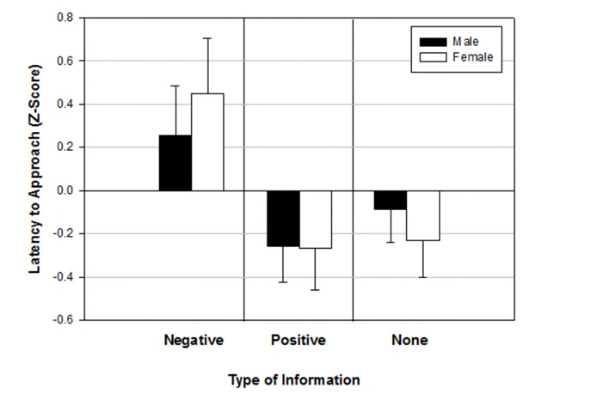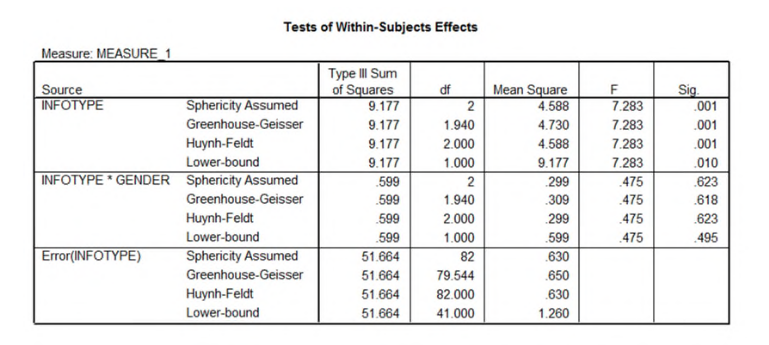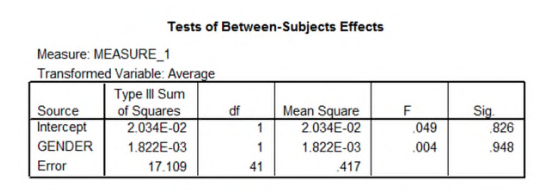Multiple Choice
Field and Lawson (2003) reported the effects of giving children aged 7-9 positive, negative or no information about novel animals (Australian marsupials) . This variable was called 'Infotype'. The gender of the child was also examined. The outcome was the time taken for the children to put their hand in a box in which they believed either the positive, negative, or no information animal was housed (positive values = longer than average approach times, negative values = shorter than average approach times) . Based on the output below, what could you conclude? (See Field, A. P., & Lawson, J. (2003) . Fear information and the development of fears during childhood: effects on implicit fear responses and behavioural avoidance. Behaviour Research and Therapy, 41, 1277-1293.) 


A) Approach times were significantly different for the boxes containing the different animals, but the pattern of results was affected by gender.
B) Approach times were significantly different for the boxes containing the different animals, but the pattern of results was unaffected by gender.
C) Approach times were not significantly different for the boxes containing the different animals, but the pattern of results was affected by gender.
D) Approach times were not significantly different for the boxes containing the different animals, but the pattern of results was unaffected by gender.
Correct Answer:

Verified
Correct Answer:
Verified
Q7: Which of the following is not considered
Q8: What test is used when there has
Q9: In order to establish the significance of
Q10: A mixed factorial design<br>A) Is one in
Q11: A researcher wanted to know if sex
Q12: Which of the following is a mixed
Q14: Based on the SPSS output given below,
Q15: Which of the following is representative of
Q16: A study investigates whether there are personality
Q17: Field & Lawson (2003) reported the effects